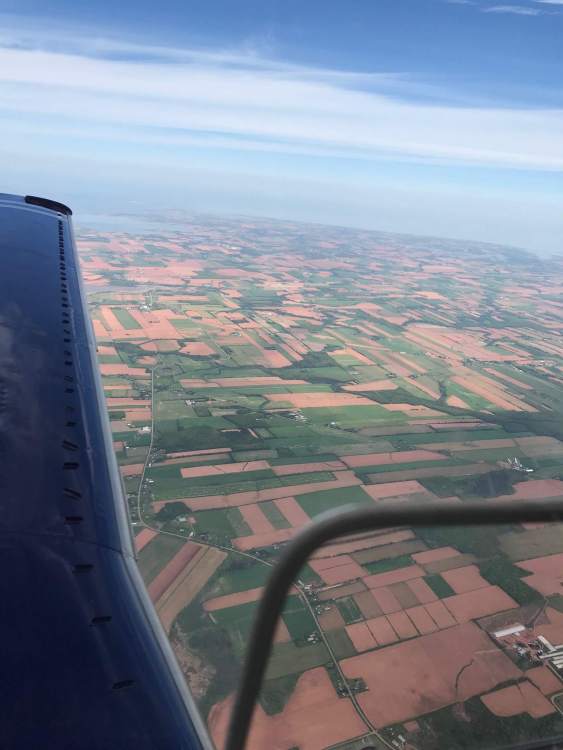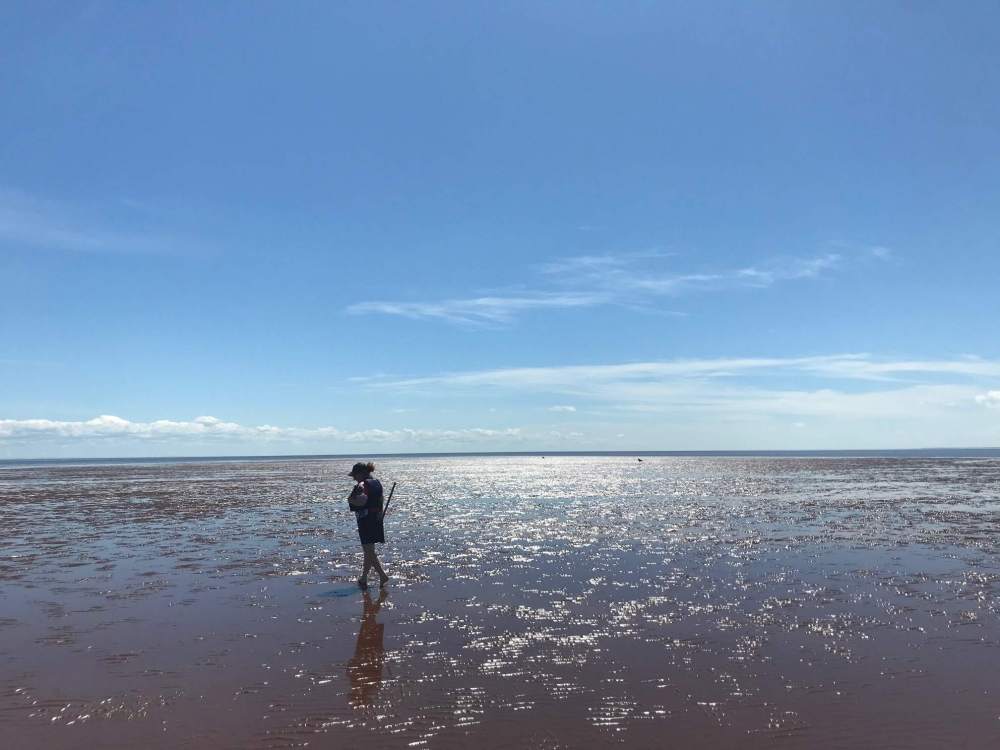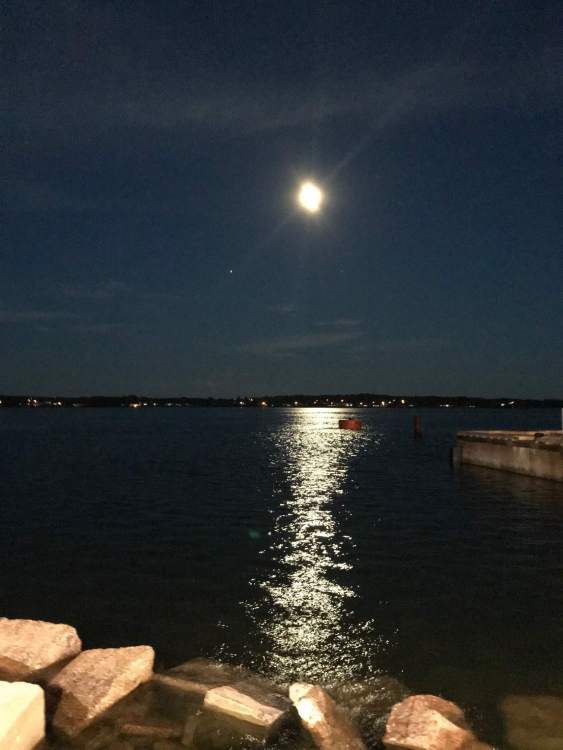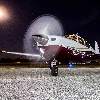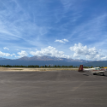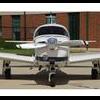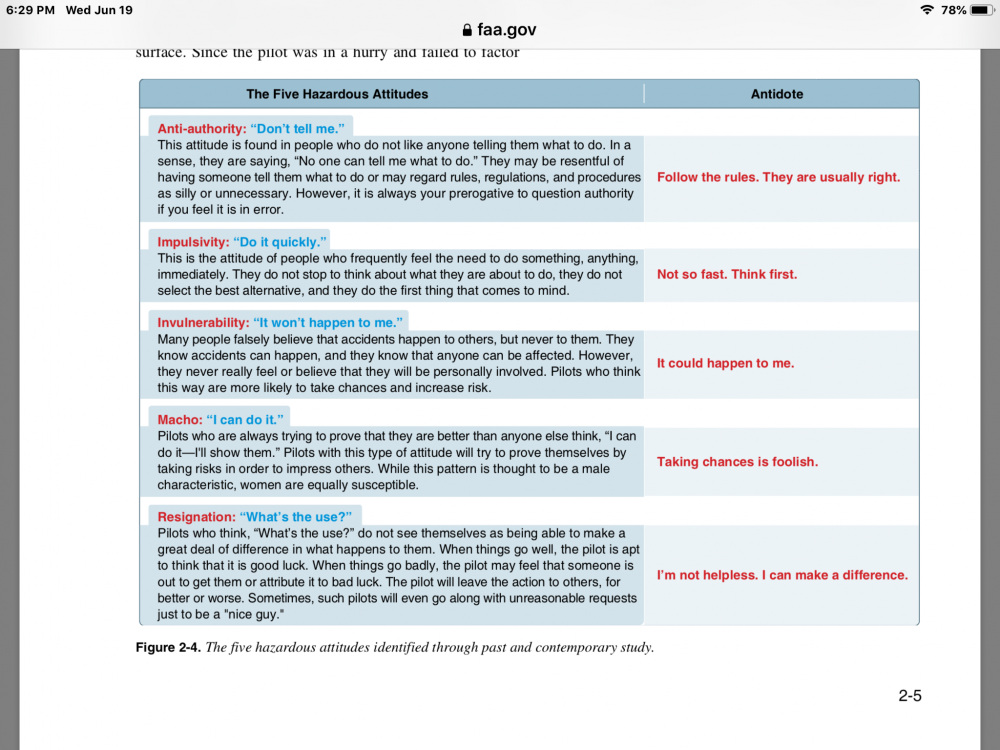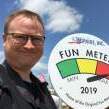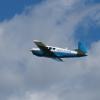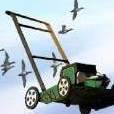Leaderboard
Popular Content
Showing content with the highest reputation on 06/20/2019 in all areas
-
Last week my wife and I had our 25th wedding anniversary and we went to Prince Edward Island. Beautiful. Most interesting thing we did was rent kayaks and go clamming on the Bay of Fundi. They gave us directions - line up a light house and a place on land - which took like 30 min of kayaking to get to the starting point - then head straight out to see along that line for another 30 min and at low tide a sand bar emerges from the water. And there were tons of clams in that sand to rack out. And 2 bald eagles were there clamming with us. Biggest clams I ever saw. I told my wife - well 25 years - half way there.10 points
-
7 points
-
If you had a sudden drop in pressure like that in flight - that might be grounds to divert immediately and get on the ground asap, and be possibly ready to declare an emergency. Take it from a guy who had an exciting flight almost a year and a half ago. Ending with a dead stick landing on a runway. If you are flying and a major system like your power plant is showing signs of failure, don't just plow on and don't wait for complete failure before getting yourself on the ground. Thankfully all is well. And I don't mean to be knocking you. Just talking out loud for the community.4 points
-
He made it 12 days after I flew him down. RIP Jack!! Tom Published in Lexington Herald-Leader on June 19, 2019 Jack Wayne Frost February 25, 1959 - June 15, 2019 Quinnesec, Michigan Jack was born on February 25, 1959 and passed away on Saturday, June 15, 2019. Jack was a resident of Quinnesec, Michigan at the time of passing. He was also a U.S. Army veteran. Funeral Services will be conducted at 12 Noon Wednesday, June 19, 2019 at Red House Baptist Church, 2301 Red House Rd, Richmond with Dr. Deron Cobb and Dr. Tim Patterson officiating. Burial will be at 2:30 PM Wednesday at Camp Nelson National Cemetery in Jessamine County with full military rites. Visitation will be after 10:00 AM Wednesday at the church3 points
-
Testwest here has done extreme drag reduction on his 77 J and gets 165 KTAS at 10 GPH. That's the best I know of...and he's a pro test pilot so I believe his numbers. Off the top of my head, his mods are: Later model overhead vent retrofit, plus replace fuselage skin to delete pop-up scoop F/G smooth belly (may have antenna inside) Wing tips with nav antennas inside/cat whisker delete Forward COM antenna delete LoPresti cowl Hartzell Top Prop F/G low profile lower gear doors/caliper rotation/aft blister delete Optimal rigging He hasn't repainted, either, so new jetdriven-quality paint might bump that up a bit more! Roy LoPresti was an aero design genius and went after drag reduction first and foremost when turning the F into the J. That formula still holds true today for the speed/efficiency freaks! We have more to work with than he did in 1975...but it takes effort and money. If you like to tinker, get after the rigging of gear doors and control surfaces. Check cowl fit and repair as needed to keep it from riding up (like mine!) and creating a step behind the spinner. Get rid of obsolete antennas, beacons, etc. Keep it clean. Remove dead weight. If re-doing interior, consider non-leather to save weight. Put some ballast in the baggage area (like a couple gallons of water) to move the cg aft if you don't have folks in back. It all adds up to more speed! Or be happy with what you have! Starting with any Mooney of puts us at the top of the efficient speed class. 5 knots more cruise speed only saves ~5 minutes on a 350 NM flight at typical J speeds. Will you spend 10 AMU to do so? I won't answer. Sent from my LG-US996 using Tapatalk3 points
-
When I filter its past stopped or very, very slowly moving traffic. I don't do it going freeway speeds, that is a bit nuts.3 points
-
It’s actually only 7.5 horse power. Because the engine is limited to 200 horsepower after five minutes. Then as you climb your 7.5 hp becomes five then it becomes two. The most money ever spent for the smallest gain3 points
-
3 points
-
Not necessarily to maintain level flight, though- and that’s where PTK is incorrect. All you have to do is try to increase your turn rate by increasing load factor. You can still be in a stable rate of descent, with the intention of continuing that rate of descent. All that’s required to increase the speed at which your airfoil will stall is setting an angle of bank. To actually stall, all you need to do is exceed the critical angle of attack. And here in lies the root of why an AoA indicator is far more valuable than an airspeed indicator in determining where that stall will occur. To put it in layman’s terms: if you bank the airplane, then increase the backstick (backyoke?) pull, your aircraft will stall at a higher airspeed than if you are wings parallel to the horizon (lift vector perpendicular to the horizon). Pulling to “maintain level flight”, while a potential cause for an accelerated stall, is one result, but not the sole reason. You can be in a descending turn, if you pull to increase your turn rate, and continue to reorient your lift vector for a rate of descent- you will stall at a higher airspeed than if you are wings level. Same goes for a climbing turn.3 points
-
Today at Udvar-Hazy at Dulles I “flew” the Wright Model B simulator. Jeez, three minutes seemed like FOREVER. Rotate st 35. Best climb 35. Best cruise 35. Stall 35 (seemingly) Wing warp to turn with hideous adverse yaw roll stick left = forward and right = aft. Thot I was going to die. And I have thousands of hours: the Wrights had to learn to fly in that beast.3 points
-
2 points
-
Replaced with some Honeywell LED Backlit switches with separate circuit breakers in stead of the switch/breaker combination.2 points
-
2 points
-
Update on pilot's condition: https://www.msn.com/en-us/weather/topstories/pilot-in-deer-valley-plane-crash-still-fighting-for-his-life-wife-says/ar-AAD9iGN?ocid=spartandhp Prayers up for a successful recovery, the challenges of which I cannot imagine.2 points
-
...I think you may well pass right over my head on your way to Quebec City from Alabama. Stop by and say hi! No kidding - yesterday I was walking between buildings with the chair of chemical engineering and he was wearing a suit and then he started complaining it was too hot - and then I started making fun of him because it was 78F. Sunny, light breeze and moderate low humidity. I was wearing shorts and a polo, and sunglasses of course.2 points
-
2 points
-
2 points
-
I would just follow Lycoming's recommendations. https://www.lycoming.com/sites/default/files/Lycoming Reciprocating engine Break-In and Oil Consumption.pdf2 points
-
Welcome Jeremy. A new engine monitor makes a great early upgrade- a certified one gives you the ability to take out a lot of old legacy instrumentation, and keep all the flammables forward of the firewall. They don't cost that much and are relatively painless to install in my experience with the support of a good A&P IA. Frees up a bunch of panel space too.2 points
-
2 points
-
The best solution is what a previous owner of my plane did and just paint the bottom half blue. And now I realize why.2 points
-
2 points
-
You guys flying off pavement probably don’t kill as many bugs as us turf guys but I find that a little spritz of WD40 on the prop blades after each flight and then a quick wipe with a paper towel takes the bugs right off. They don’t seem to stick very well to the treated surface.2 points
-
I was happy that Jan was there with the Acclaim Ultra. The reason why was not so cheerful :-( Keep that beauty flying !2 points
-
1 point
-
Upgrades are a disease, even if I think the $3,900 for my power flow should have gone elsewhere in the plane... Sent from my iPhone using Tapatalk1 point
-
Almost everything you do to that panel will be fluff and does not mean much, an iPad can do most of it..... get a CO detector get an engine monitor1 point
-
Blu, how well does an ordinary Mooney tow bar fit into that tube? I’d want to know what that is before pulling it out? Mostly, I just want to know what that is... Best regards, -a-1 point
-
Chrixxer you need to make a gps speed run as described above before you conclude your speed is down. We did ours at 8000 feet with my wife and I on board. I bet you find yourself going faster than you think plus it's fun.1 point
-
Collecting CHT data will probably give you the insight... Raw cylinder / piston ring clearances are tight... they generate a lot of heat... the result is higher than normal CHTs. If you are not seeing higher than normal CHTs the rings have nicely worn in... I followed the Continental guidelines for the break-in of my IO550... a few hours of flying each time for a few days... The reasons for full power... Break-in is not a gentle exercise... with gentle, There is no break-in... Max pressure in the cylinders helps to seat things properly... Max rpm has a way to push the piston all the way to the extreme end of the travel... Altering rpms on a schedule... keeps from wearing a small region by spreading out the wear intentionally... It helps to bring your engineer with you so you can fly the low / fast runs... and have somebody else be watching the gauges and helping keep an eye out for traffic down low... I brought some high powered Mooney specific CFII (John Pallante) when I did mine... they were familiar with engine break-in, and Mooneys, and I can always use the training... Primarily, I didn’t want to be alone if something fell off the engine, like a fuel line... i’d Be on the ground before I could figure out what happened... The low altitude flight is for best MP... over the ground we were probably at around 2k’, over the ocean, 1k’... during the descending transition, Vne was a limitation that was observed. We were supposed to change rpm every 15minutes or so... conveniently, my CFII pointed out some really obvious land marks on the ground instead of watching a clock too... WOT, full RPM, down low at 190 kts... things come up quickly while in a descent... it is good to have support close by when questions come up... Break-in is not an exact science. More of a good guideline that captures all of the steps needed, and things to avoid... No need to fly 10’ msl... PP thoughts only, not a mechanic or a CFI... Best regards, -a-1 point
-
+1 for following the manufacturer guidelines... The misery/mystery of engine break-in have all been broken... Break-in of an NA engine typically includes a set of flights... the first ones orbit the airfield looking for leaks and other tests... The Long XCs typically include... the Jersey Shore runs...1k’ AGL High power Cold running, cold air, maximum cooling Full mixture alternating rpms every 15 minutes Keep an eye on CHTs, you might see the break-in actually occur... If the engine was run on a test stand, most of the Break-in may have occurred already... PP thoughts only, not a mechanic... Best regards, -a-1 point
-
You didn't say if the stains are on the top or bottom of the wing, but from your description it sounds like the bottom. In that case, it might be easiest to use some acetone to remove the sticky stuff and then polishing compound to remove the stained paint. If the paint ends up too thin or down to the primer, you can take the tail access panel to an auto paint shop and get a color match in a spray can and touch it up. It won't blend perfectly but underneath it won't be noticeable. Even if it's on the top of the wing, you will have to look really hard with the light just right to notice the repair if you use a little polishing compound to blend the edges of the paint. That's what I've been doing with some blemishes in my paint and no one but me notices them. Skip1 point
-
1 point
-
Good evening Don, I know you sent me a message on Sunday, my apologies for the delay on this as I was out on vacation late last week until early this week. I want to make sure everyone understands that it is illegal to make these types of adjustments into an STC'd system, especially in a flight control system. changing these gain values from what was approved by the FAA and our certification teams could have very adverse affects in other phases of flight. I'm sorry Don, I will reach out to you so that we can get these settings corrected by the dealer to what is approved and we can get with them to get this troubleshot to try and find out what the problem is in your airframe.1 point
-
1 point
-
1 point
-
1 point
-
there is no difference between the brands, other than price. They are made to the specification for the application, meaning they will both use the same grade and durometer elastomeric material, and the same spacer materials. You should replace them every 5-7 years to prevent vibration damage to the airframe. Old stiff mounts transmit vibration that wrecks instruments, cracks aluminum skins, wears out aileron and elevator hinges, and the tail trim on Mooneys.1 point
-
Driving is too... pedestrian. April in Florida can be really chilly... in NC, it was probably just above freezing... With a plane full of people, it is hard to carry along the fancy powered bikes, skate boards, or hover boards... Not enough UL to carry a spare case of beer. Given the choice... walk to get food and beer, or stay stationary... the usual American sedentary lifestyle has to take a back seat... With the LB, and only one other person, there is plenty of room for all that, a spare power source, and ice if you were to want your beer cooled... and all the sweatshirts you ever needed... When at first flight... there is only one rule posted... ‘No Camping’... Surprised we didn’t get arrested for possession of a tent or two. what can you do with that finely posted sign..? The whole visit is about celebrating defying important laws... namely the laws of physics, and that pesky law of gravity, and doing things that people called crazy... So when visiting FF... wait til the sun goes down... before setting up the tent! Be experienced before attempting setting up a tent in the dark, with 20kt chilly winds... and a nights worth of food and beer in your stomach. Not admitting any guilt... I may have seen somebody doing this... Best regards, -a-1 point
-
That's just not true. Sometimes when I park my car at the Walmart I need to walk all the way across the parking lot to find a nice motorized shopping cart.1 point
-
That is the argument that was used to ban large sodas in NYC and proposals to ban candy bars elsewhere; that your personal choices affect others either financially or emotionally. I guess its a philosophical difference of opinion, but I believe each man owns his life and doesn't owe his life to the convenience of others. Not really a debatable point but a personal philosophy. -Robert1 point
-
If you are not increasing load (by maintaining altitude) I think PTK's statement is correct.1 point
-
1 point
-
Yes. In a bank the vertical lift component (that was acting straight up when at 1 g or level flight) splits to horizontal and vertical components. Assuming you don't change the amount of lift the wing is producing some of the lift that was acting to hold altitude is now acting to turn the airplane. The result of this is that now we have less of vertical component to maintain altitude. Now hold that thought and fast forward to a low agl, low airspeed, overshot base to final turn where instead of going around the pilot wants to desperately maintain altitude and get back on final. To maintain altitude lift needs to increase and to do that pulls back on the yoke which increases the aoa. To get back on final rudders the nose around which produces yaw with unwanted roll. These are all incorrect inputs hopelessly trying to correct a pattern gone bad much earlier than the overshot base to final. We need to think of the pattern from downwind to touchdown as one continuous descending turn flown according to what the wind is doing.1 point
-
Welcome aboard, Jan. If you have a moment, take some time to introduce yourself. leave some contact info. Including email and handy number, website...? Somebody may want to contact you, or know where to go to discuss new Mooneys in your part of the MooneyWorld... Best regards, -a-1 point
-
Wow, I do not know you but your post makes me wonder if you and I would get along. I hope my first impression is wrong and that moreover your assessment is as incorrect as it is in poor taste. Interestingly, this was your first post on this forum. How about an introduction before you pontificate?1 point
-
https://www.realtor.com/realestateandhomes-detail/Cessna-Way_Fort-Valley_GA_31030_M66495-97552#photo41 point




